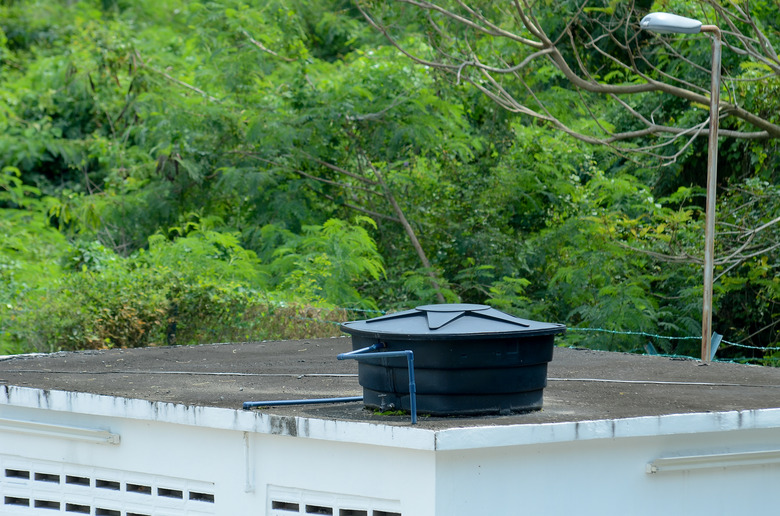Why Are Black Water Storage Tanks Preferred Over White Ones?
We may receive a commission on purchases made from links.
Why is it that black water storage tanks seem to be ubiquitous in the rural landscape, and you rarely see other colors used for water storage? Color is indeed important when storing water, especially to ensure potability but also to blend in with the surrounding area.
Tip
Black water storage tanks are preferred over white or other light-colored tanks because they block exposure to sunlight, which can create conditions conducive to the growth of algae.
Why Algae Is Bad for Your Water
Why Algae Is Bad for Your Water
Algae can make your water taste and look awful, with a rotting smell and a green or blue-green color. Water with algae can eventually clog your pipes. Even worse is that some species of algae can be harmful, creating a chemical called cyanotoxin, specifically microcystin, which is toxic to humans and animals.
If you're familiar with fish tanks and aquariums, you may know that algae blooms in the water can be fatal to fish and turtles. Algae uses all the oxygen in the water, causing oxygen deprivation and eventually death. If you use water with algae to irrigate your plants, it can stunt their growth, as the algae absorbs the nutrients and therefore starves the plants.
It follows that you absolutely don't want algae in your drinking water. If you have detected algae coming out of your tap, stop drinking the water immediately. Don't boil it thinking that could be a temporary solution, as boiling water that contains the toxin microcystin actually concentrates the toxin. In addition, avoid bathing in it, washing dishes with it, or cooking with it.
Avoiding Algae in Your Water Tank
Avoiding Algae in Your Water Tank
Sunlight creates an environment conducive to photosynthesis, which in turn fuels the growth of algae in water. When choosing a tank, ensure no sunlight can penetrate the material. This usually means a black-colored tank, but there are some technologies that can eliminate the sun and still feature a lighter color if you prefer it. These types of plastics are food-grade poly that incorporate light-blocking abilities. While researching and shopping for a water tank, make sure you are purchasing from a reputable manufacturer or distributor and that any sun-blocking technology used is well tested and certified.
Algae in the Tank, Oh My
Algae in the Tank, Oh My
There's a simple test you can perform to see if your tank is likely to attract the growth of algae: Open the lid and see if sunlight is shining through the sidewall. This unfortunate glow tells you that your tank is at risk of developing algae.
If this tank is already purchased and installed, the cost would be prohibitive to completely replace it. Instead, implement some anti-algae strategies to try to avoid its presence. First, try bleach at a rate of 1/4 teaspoon per gallon of water. More specifically, the Environmental Protection Agency recommends specific ratios of bleach to water based on the percentage of sodium hypochlorite in the bleach, which is either 6 or 8.25 percent.
You can also try chlorine at a rate of four parts per 1 million parts of water, which will be safe for drinking or irrigating and won't damage your plumbing if used properly. Never combine both bleach and chlorine, however.
References
- Enduraplas: Plastic Water Tanks: Does the Color Matter?
- PolyProcessing: Carbon Black: The Best Polyethylene Storage Tank Color Choice?
- Enduraplas: Will Algae in Your Water Tank Harm Humans, Pets or Plants?
- National Sanitation Foundation: Blue Green Algae in Drinking Water
- Enduraplas: 3 Ways to Eliminate Algae Growth in Water Tanks
- United States Environmental Protection Agency: Emergency Disinfection of Drinking Water
